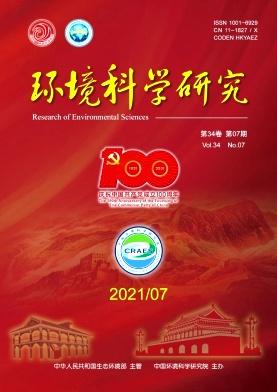Investigation on and Protective Measures and Exposure Risks for the People Related to Medical Waste Disposal during the COVID-19 Epidemic
Fangyuan Zheng, Xiangyu Xu, S. Cao, X. Duan, Jin Ma, Xiao-Lin Zhao, Jian Xu, Fengchang Wu
{"title":"Investigation on and Protective Measures and Exposure Risks for the People Related to Medical Waste Disposal during the COVID-19 Epidemic","authors":"Fangyuan Zheng, Xiangyu Xu, S. Cao, X. Duan, Jin Ma, Xiao-Lin Zhao, Jian Xu, Fengchang Wu","doi":"10.13198/J.ISSN.1001-6929.2020.06.06","DOIUrl":null,"url":null,"abstract":"During the COVID-19, the production of medical waste increased sharply, which brought a challenge to the capacity of China's medical waste disposal and the protection of the group that received, transported and disposed of medical waste In order to study the potential risks and protection measures against exposure for the workers in the collection, transportation, temporary storage, and disposal of medical waste, ninety staff members from a typical medical waste disposal center in Zhejiang Province were selected as the research objects to study the personal protection level of staff in different types of work, as well as the influence of items or locations at risk of infection on their choice of protective measures The results show that among the 90 surveyed people, 98 9% of the staff wore medical respirators or full-face masks and half-masks during the work, 87 5% of the staff wore work clothes, 79 6% of the staff wore labor protection cap, 64 8% of workers chose to wear rubber gloves and protective boots for protection, and goggles (55 7%) and protective clothing (33 0%) were also worn when they were closely contact with medical waste At the end of a single task, 100% of the respondents chose to wash their hands with running water, soap, quick disinfectant or 0 3%-0 5% iodophor disinfectant or bathe, and 94 3% of the respondents disinfected their personal work items;all respondents would take protective measures such as washing hands, disinfecting items, ventilating after returning home The personal protection measures taken by different staff were mainly related to the items or locations that were exposed to risk of infection during the work process Among them, the staff who were in contact with high-risk items, turnover containers (barrels) or the outer surface and inner wall of disposable packaging containers were more inclined to a higher level of protective measures This research indicates that there is a significant difference between the qualified rate of protection and the type of work for the staff in this survey (P0 05) In the future, more detailed and specific policies and regulations should be formulated, and the management and training of the employees should be strengthened to increase their awareness of prevention and reduce the risk of occupational exposure © 2020, Editorial Board, Research of Environmental Sciences All right reserved","PeriodicalId":21108,"journal":{"name":"环境科学研究","volume":"33 1","pages":"1705-1710"},"PeriodicalIF":0.0000,"publicationDate":"2020-07-01","publicationTypes":"Journal Article","fieldsOfStudy":null,"isOpenAccess":false,"openAccessPdf":"","citationCount":"0","resultStr":null,"platform":"Semanticscholar","paperid":null,"PeriodicalName":"环境科学研究","FirstCategoryId":"1087","ListUrlMain":"https://doi.org/10.13198/J.ISSN.1001-6929.2020.06.06","RegionNum":0,"RegionCategory":null,"ArticlePicture":[],"TitleCN":null,"AbstractTextCN":null,"PMCID":null,"EPubDate":"","PubModel":"","JCR":"Q2","JCRName":"Environmental Science","Score":null,"Total":0}
引用次数: 0
Abstract
During the COVID-19, the production of medical waste increased sharply, which brought a challenge to the capacity of China's medical waste disposal and the protection of the group that received, transported and disposed of medical waste In order to study the potential risks and protection measures against exposure for the workers in the collection, transportation, temporary storage, and disposal of medical waste, ninety staff members from a typical medical waste disposal center in Zhejiang Province were selected as the research objects to study the personal protection level of staff in different types of work, as well as the influence of items or locations at risk of infection on their choice of protective measures The results show that among the 90 surveyed people, 98 9% of the staff wore medical respirators or full-face masks and half-masks during the work, 87 5% of the staff wore work clothes, 79 6% of the staff wore labor protection cap, 64 8% of workers chose to wear rubber gloves and protective boots for protection, and goggles (55 7%) and protective clothing (33 0%) were also worn when they were closely contact with medical waste At the end of a single task, 100% of the respondents chose to wash their hands with running water, soap, quick disinfectant or 0 3%-0 5% iodophor disinfectant or bathe, and 94 3% of the respondents disinfected their personal work items;all respondents would take protective measures such as washing hands, disinfecting items, ventilating after returning home The personal protection measures taken by different staff were mainly related to the items or locations that were exposed to risk of infection during the work process Among them, the staff who were in contact with high-risk items, turnover containers (barrels) or the outer surface and inner wall of disposable packaging containers were more inclined to a higher level of protective measures This research indicates that there is a significant difference between the qualified rate of protection and the type of work for the staff in this survey (P0 05) In the future, more detailed and specific policies and regulations should be formulated, and the management and training of the employees should be strengthened to increase their awareness of prevention and reduce the risk of occupational exposure © 2020, Editorial Board, Research of Environmental Sciences All right reserved
新冠肺炎疫情期间医疗废物处置人员接触风险调查及防护措施
新冠肺炎期间,医疗废物的生产急剧增加,这对中国医疗废物处理能力和接收、运输和处置医疗废物群体的保护提出了挑战,选择浙江省某典型医疗废物处理中心的90名工作人员作为研究对象,研究不同工种工作人员的个人防护水平,以及感染风险项目或地点对其防护措施选择的影响,98.9%的员工在工作期间佩戴医用呼吸器或全面罩和半面罩,87.5%的员工穿着工作服,79.6%的员工佩戴劳动防护帽,64.8%的员工选择佩戴橡胶手套和防护靴进行防护,与医疗废物密切接触时也佩戴护目镜(55.7%)和防护服(33.0%)。在单个任务结束时,100%的受访者选择用自来水、肥皂、快速消毒剂或0.03%-0.5%碘伏消毒剂洗手或洗澡,94.3%的受访者对个人工作物品进行消毒;所有受访者回家后都会采取洗手、消毒物品、通风等防护措施。不同员工采取的个人防护措施主要与工作过程中接触到感染风险的物品或地点有关,周转容器(桶)或一次性包装容器的外表面和内壁更倾向于采取更高级别的防护措施。研究表明,本次调查中工作人员的防护合格率与工作类型之间存在显著差异(P0 05)。未来,应制定更详细、更具体的政策法规,并加强对员工的管理和培训,以提高他们的预防意识,降低职业暴露风险©2020,《环境科学研究》编委会保留所有权利
本文章由计算机程序翻译,如有差异,请以英文原文为准。


